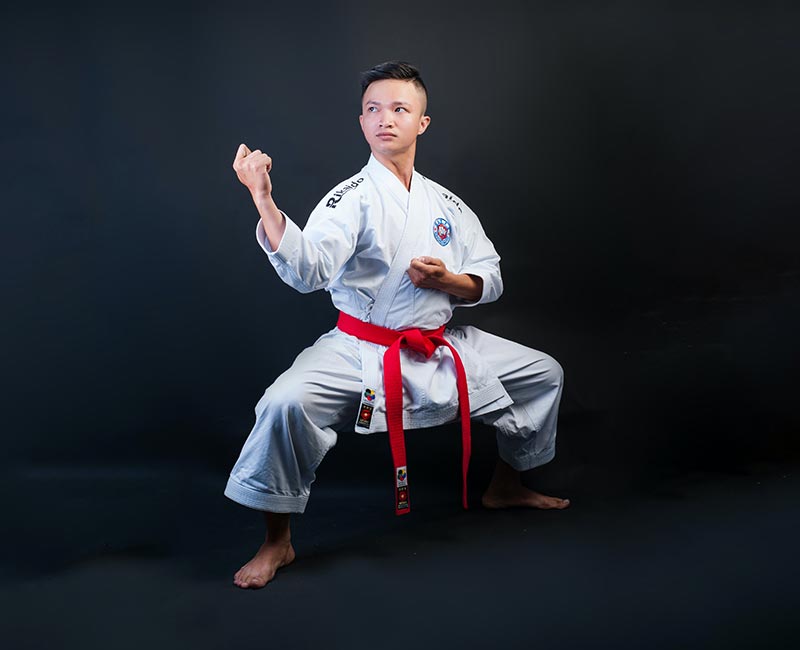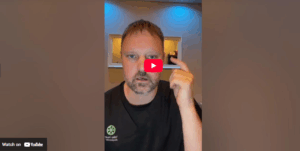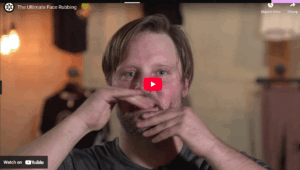If you want to learn just one thing about fighting—learn to perfect your stance.
The Stance
Your stance is just your unique way of being ready to move. It is the starting point of all your martial movement. To combat at your best, it is mandatory to find, understand, and master your starting position.
Attempting one-on-one combat, or martial arts without a proper stance is much like doing a max deadlift without properly securing core.
Always remember, my beautiful reader, that the stance you choose is your foundation. A proper stance allows you to move powerfully—yet effortlessly, while smoothly transferring force from your body to your extremity.
The more professional fighters would tell you that your stance is dependent on your fighter-type. For example, a fighter such as Stephen Thompson has perfected a Karate-style stance, which enables the American MMA artist to deploy certain kicks to their highest effect.
However, you should always avoid copying your favorite boxer. Yes, it is super inspirational to watch Jon Jones and Khabib do their thing with such swiftness—but you must perfect the stance that will cover your weaknesses, while front loading your strengths.
Therefore, whether you’re a boxer, MMA/Muay Thai practitioner, or just someone looking to better their self-defense, it always pays to have a good understanding of different stances.
So let’s dive straight into the pros and cons of different types of fighting stances, and how you can perfect them.
Different Fighting Stances. Their Benefits. Their Disadvantages!
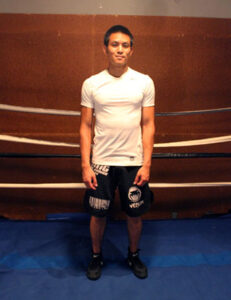 When you know the basics of different types of stances, it can help you foreshadow your opponent’s moves in combat. Your opponent will stand in a way that will make their favorite attacks more accessible. If you love front foot side kicks, you will tend to stand with your front foot already turned to the side.
If you love to grapple you will tend to stand with your shoulders square to your opponent, which allows for equal reach with both hands.
Let’s start with your basic stance with feet shoulders width apart, and hands by your side.
In this position, you are not showing any weapons, with your ‘natural’ posture, except for the possibility of forward head movement. As you can see, your stance is made up of your:
When you know the basics of different types of stances, it can help you foreshadow your opponent’s moves in combat. Your opponent will stand in a way that will make their favorite attacks more accessible. If you love front foot side kicks, you will tend to stand with your front foot already turned to the side.
If you love to grapple you will tend to stand with your shoulders square to your opponent, which allows for equal reach with both hands.
Let’s start with your basic stance with feet shoulders width apart, and hands by your side.
In this position, you are not showing any weapons, with your ‘natural’ posture, except for the possibility of forward head movement. As you can see, your stance is made up of your:
- Hands
- Knees
- Feet
- Shoulders
The Position of Legs
Knee Depth Determines the Range of Your Distance
The more your knees are bent, the more distance one can cover in combat. Consider it like a box-jump vs a jump rope. Before doing a box jump you will bend your knees and your feet will be flat on the ground. This position loads your hamstrings and glutes to jump.
On the other hand, having a less bent knee would result in a jump rope-style movement. Weight is shifted to your toes and power is generated more for the quads and calves.
Therefore if someone is coming at you with deeply bent knees, he/she is more likely to lunge at you.
Alternatively, if someone is standing tall, then movement would naturally look more like a skip slip or hop in and out of your range.
Visualize a cobra in motion—more the coil, more the spring!
Wider Stance
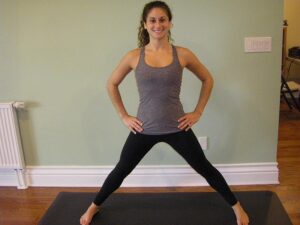
The super-wide stance is fantastic for transferring your weight into powerful punches. The body has a more stable base which it can push from. The wide base allows for a lean. It increases the range of motion of your head while decreasing the motion of your hips. The angle of force from your legs also allows for easier side-to-side motion.
Disadvantage
Kicks will be more difficult to execute because a large weight shift has to occur before you can lift your foot off the ground.
If someone with a wide stance they will tend to be a more hand dominant fighter.
Narrow Stance
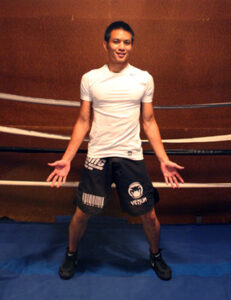
Carrying a narrow stance enables you to generate force upwards, as it is easier to pick up one’s feet. Less weight transfer is involved before you can unload a foot.
A compact stance increases the movement of the hips and decreases lean of the head. The body is in a natural hula hoop position. This makes kicking easier and more powerful.
Disadvantage
Hands do not offer a lot of power, when the feet are narrowly placed.
When you see your someone coming at you with a narrow stance, probably, they like to kick!
The Position of Hands
Higher Hands
As the hands are raised, or come closer to level with the shoulder, they progressively become more powerful. For instance, if hands are located at or above the shoulder they’re in a more natural position for pushing or grabbing. Waste twisting from this position generates more force, think of a baseball throw. This also allows punches to be thrown with more force.
Yet with hands around the head, it is difficult to quickly move the head out of the way. The weight of the hands adds momentum to the upper half of the body. Locking the hands up by the face tends to also lock the shoulders and ribs in place. Blocking is done either by moving the hands or the whole body. Mike Tyson boxes like this and ducks his whole body from the knees.
Lower Hands
When the hands are below the chest area, one can move the head quickly because the hands can move independently of the head and do not add significantly to the upper body momentum. Muhammad Ali keeps his hands relatively lower and just slips his head. With the hands lower one can more easily move the neck and shoulders.
For instance, if a boxer is slipping, he/she would fight with lower hands. You can spot wrestlers and Jiu Jitsu practitioners deploying lower hands because lower hands enable them to do a takedown defense.
The Position of the Waist
Sideways Stance
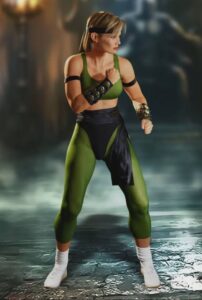
Sideways Stance with a Toe Pointing Sideways
Many people use this stance to fake an attack. With the toe inline with the shoulder the leg is in a very strong position for moving forward and back. Often the front foot will need to be rotated forward to kick and that is their “tell”.
With the toe inline with the shoulder or sideways, means a side kick or back spin kick can be launched easily. It is hard to sprawl or go for a takedown with the toe point sideways because the knee can’t bend forward.
Sideways Stance with a Toe Pointing Forward
This is a commonly used fencing position. The front foot forward allows the knee to bend and hips to rotate forward. The rear foot is able to launch more powerful kicks, like front kicks or roundhouse.
The forward-pointing toe enables a greater knee bend of the front leg, which allows one to shoot in for a takedown or sprawl.
Furthermore, as the stance narrows, the user is in a position to defend against kicks with their front leg. This stance is often deployed by Muay Thai practitioners.
However, it is difficult to launch a spin kick from that position. A “tell” if a spin kick or sidekick is coming is if you see the front foot rotate front pointing forward to the side.
Sideways Chest Forward Stance

Therefore, whenever you see your foe assuming this position, brace yourself for a bout with a boxer!
Square Stance
When a square stance is adopted, the feet are pointing forward. This allows for the user to easily lunge into the opponent. It also assists with quick level changes. Moreover, the right arm becomes an offensive weapon instead of merely a defensive one, because it is in equal distance to the opponent.
Boxers adopt the square stance since they attack more with their right hand.
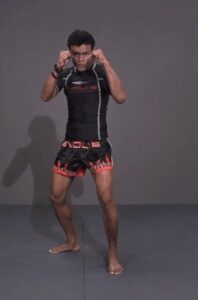
Moreover, boxers generally keep their hands high, which allows him to be offensive. Conversely, the wrestlers and BJJ people keep their hands low when assuming a square position, which helps them with takedown defenses, and allows them to shoot in.
Furthermore, a square position makes the rear leg and rear arm a potent weapon. However, since the chest is in a forward position, it is difficult to execute spin kicks.
I hope now you have the basic understanding of different fighting stances, and which one suits your style of combat.
Fighting Stances Overview
Knee bend determines the distance
- Deeper Knee bend allows for larger lung step, like a jump on a box, getting close (take down, fencing lunge)
- Less knee, more rebound, more bounce, jump rope or running. Slipping out of range
Hand Position
- Hands Higher, Hight Center of Gravity, Elbows and Head defense
- Hands lower, Lower center of gravity. Allow for greater head movement and takedown defense. Wrestler and Jujitsu, counter fighters
- Front/square stance backhand, front foot in the game
- Sideways/ln-line back hand out. Back foot in the game
Wide stance
- Wide stance movement is more side to side
- The wide stance is more head/hand radius
- Wide stance more hand power
- Faster footwork movement
Disadvantage
- Slower kick because weight is too wide. A lot of weight shit before can pick up feet
Narrow stance
- Narrow stance movement is more up and down or kicking
- Narrow stance more Hip Radius
- Narrow stance more kicking power
- Feet closer together can throw kicks faster because less weight shifts off the foot.
- Slower foot work harder to spring in and out
Disadvantage
- Less power in hands
Feet Squared
- Increases reach of rear hand for grabbing boxing wrestling.
- Squared allows for better circling movement
- Easier Head movement side to side
- Squared stands allow for level changes and takedown
Disadvantages
- Bigger target for straight kicks
- Harder Head movement forward and back
Feet Inline
- Better and moving backing up and forward
- Quick spinning kicks and sidekicks
- Sideways/ in-line stand. Front hand more distance. Jab and left hooks counter fighter means opponents need to come in
- Smaller target
Disadvantages
- Open to takedowns (harder to sprawl)
- Lead leg open to low kicks hard to check and bend when kicked
- Hard to move laterally more in and out.
Back Foot Position
Back foot on or close to on centerline
- Back foot on or close to on centerline spinning/ waist twist backward is quicker. (front foot will be sideways for stability)
Back foot forward form center line
- Back foot forward form center line, waste twist forward
- Off-center roundhouse kicking (front foot will be more forward)
Front Foot Position
Front Foot Forward
- Front foot forward easy to lunge and takedown, back foot roundhouse or front kick.
- Harder to move back because harder to push off a front foot.
- Front Forward easier to twist forward for front and roundhouse kicks.
- Front forward easier to check kicks
Front Foot Sideways
- Front foot in/sideways easier to twist away, spinning back kicks, side kicks jabs, and front hooks. Because foot doesn’t need to pivot.
- Front food in/sideway easer to move backward
About the Author
Willard Sheppy is a writer and healthcare practitioner who seamlessly melds scientific knowledge with practical applications in engaging and authoritative articles. He holds a Bachelor of Science in Environmental Science from Oregon State University and a Master’s in Acupuncture and Oriental Medicine from the distinguished Oregon College of Oriental Medicine.
In his work, Willard skillfully combines his extensive educational background in scientific research with his practical experience as a healthcare practitioner. Willard balances his life with martial arts and cherished family adventures. As a father of three, he often leads his family on camping and hiking trips along the breathtaking Oregon coast.
Connect with Willard on LinkedIn at linkedin.com/in/valleyhealthclinic or learn more about his services at valleyhealthclinic.com. Embark on this journey towards holistic health with Willard!

